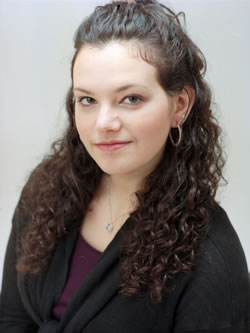|
In my first year of graduate school, I humiliated myself. A hip young male professor had us reading Martin McDonagh's The Pillowman, a play that prominently features jail-cell torture, patricide, and countless other forms of violence. My professor said that this is what good writing does: uncovers the darkness in us all. I raised my hand and told him that I don't think I have that kind of darkness in me.
I instantly regretted my words. The interaction made me feel very young and very female, both of which I was. Only a little girl, it seemed to me then, would be unable to resonate to the profound darkness of which good art is made. If I wanted to write about things like family and love and redemption—violence to the heart, perhaps, but not the body—then the literary world would have no place for me.
Now, four more years of life experience behind me, it turns out that I do hold darkness in myself and in my work—but I also hold the positive proposal I couldn't yet articulate in that classroom: what good writing does is uncover the light. Deb Margolin, my playwriting professor at Yale and a fellow hometown writer, once told our class, "It's a sin to write a tragedy if you're able to write a comedy." She meant that there's enough darkness in the world. The trick, the art, is finding the place for light.
What do I mean by darkness and light? In the stories that move me—the stories I return to—the two certainly coexist. Of imaginative inspiration, Mario Vargas Llosa says, "[We have] only one life and the ability to desire a thousand. This gap between real life and the desires and fantasies demanding that it be richer and more varied is the realm of fiction." Richness, variety, desire, fantasy, hope: this is the light I'm referring to. That gap is the darkness. Navigating the intricate relationship between the two is the fundamental problem of every story—but the most powerful stories recognize that it's the elements of light against which those of darkness are defined.
Finding the balance in that intricate relationship has to do, I think, with urgency.
To write urgently is to write what hurts, what demands to be said. There are certain stories I view as propelled by urgency: Amy Hempel's "In the Cemetery Where Al Jolson is Buried," Cynthia Ozick's "The Shawl," Junot Díaz's "Nilda." These are stories that read as if their authors had to get them out or die. They're incredibly dark. But their moments of true grace, artistry, and transcendence aren't the lines that evoke, respectively, the pain of cancer or the Holocaust or familial loss. The darkness there is unavoidable. The art is the possibility of redemption—if only linguistic, if only a bested hope: the moment when Hempel's chimp mother signs, "Baby, come hug;" when Ozick's Magda flies "through loftiness…like a butterfly;" when Díaz's Yunior feels "we could do anything…we could start over."
When I cast back now to that grad-school professor, I locate the roots of my embarrassment in the myth that writers, like their work, need to be dark figures—solitary, alcoholic, sad. But both the product and the process of writing can, instead, be about a relationship to light. Writing can be a means through which no experience of the writer's is ever wasted. For me, knowing that my doubt or heartache or fear is a study in doubt and heartache and fear allows me to endure each fully and even productively. That knowledge pushes me to do things I might otherwise resist—walk alone into the party filled with strangers; talk to the crying woman boarding my bus downtown—so I can learn what it's like to be someone who does. Being a writer is my way of making myself a braver person. It is a way of finding light in my darkest experiences, and a study in transmitting that light, above all else I might conjure, onto the page.
|


